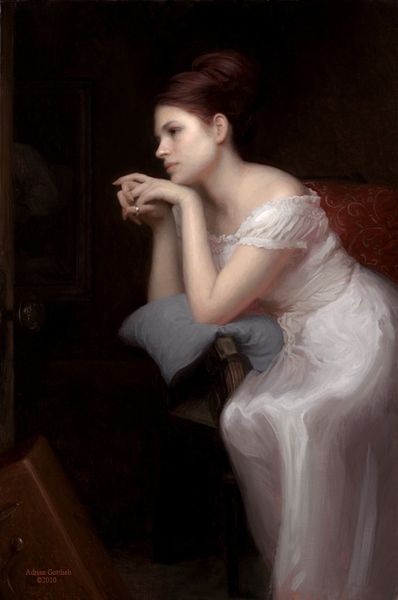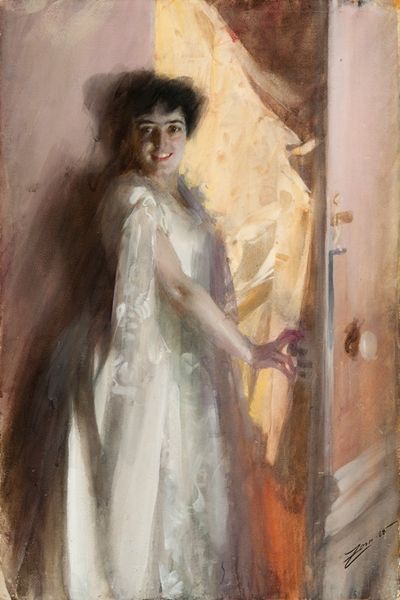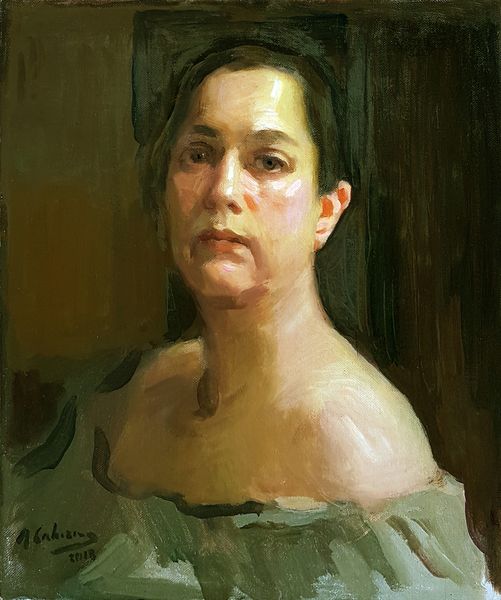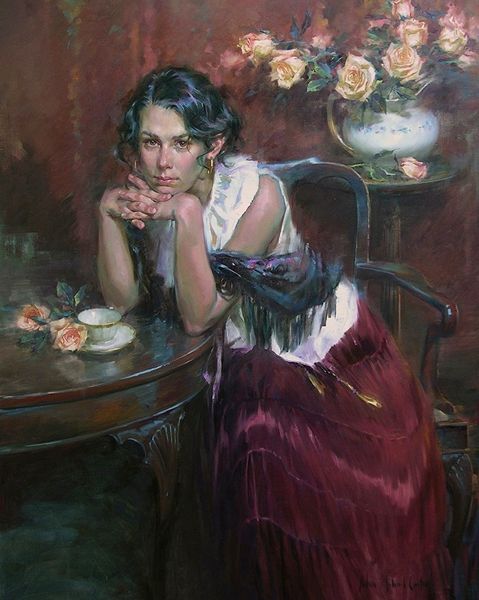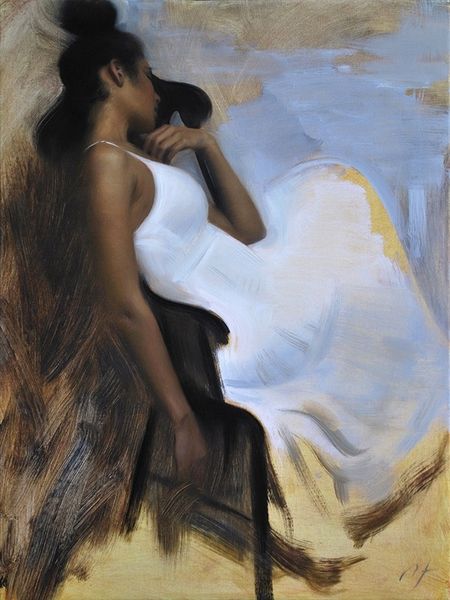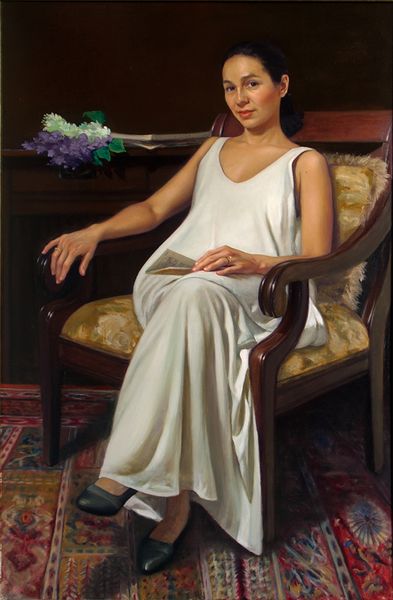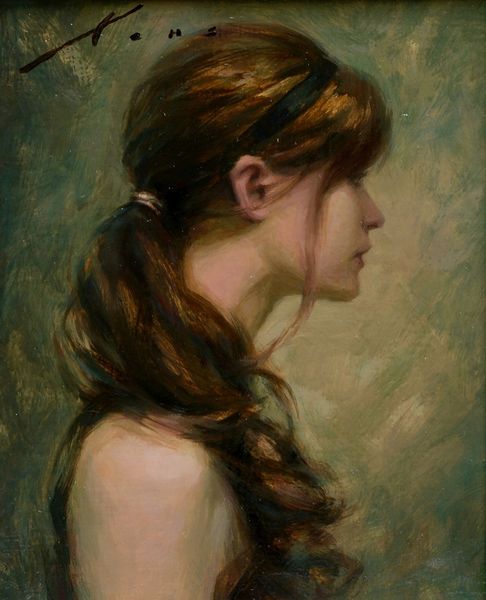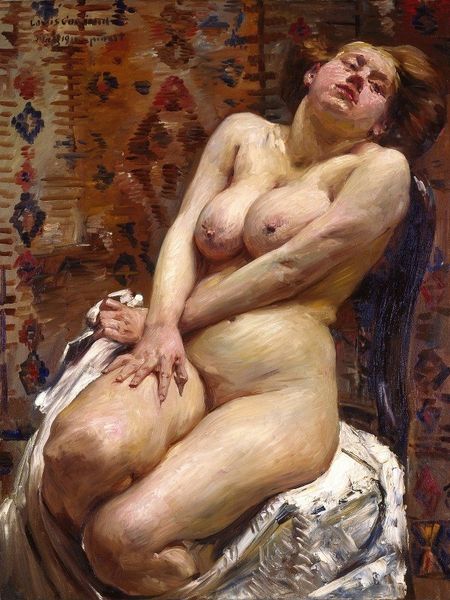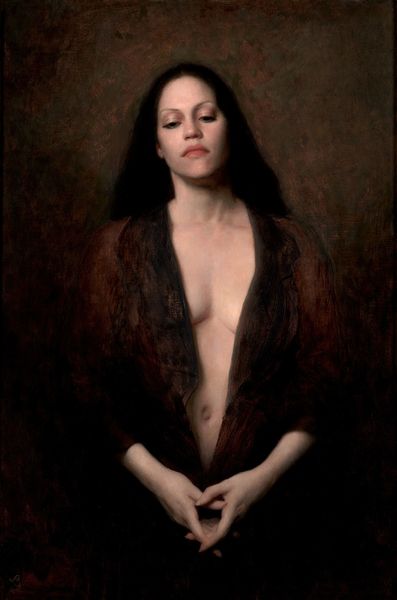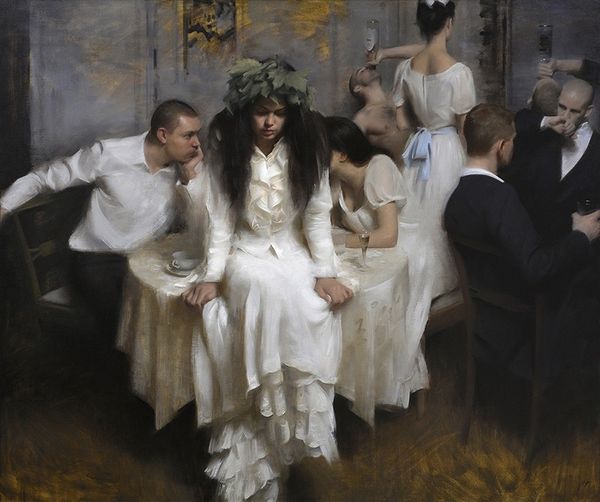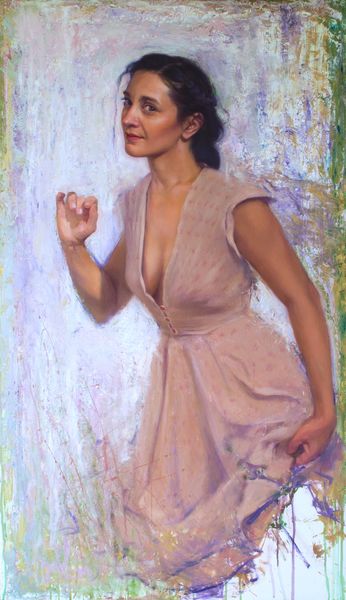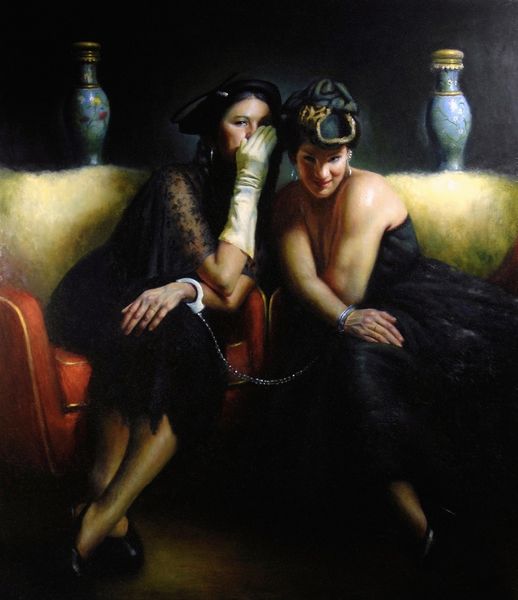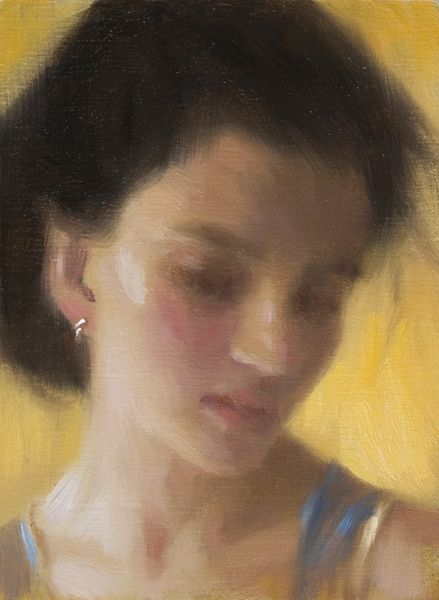
painting, oil-paint
#
portrait
#
contemporary
#
portrait
#
painting
#
oil-paint
#
figuration
#
modernism
#
realism
Dimensions: 90 x 80 cm
Copyright: Alejandro Cabeza,Fair Use
Curator: Alejandro Cabeza created "Salomé Guadalupe Ingelmo" in 2010 using oil paint, an intriguing modern portrait. Editor: Intriguing indeed. It strikes me as darkly alluring; a little unsettling even. The contrast between the figure’s pallid skin and the almost gothic darkness of the background contributes to this effect, wouldn't you agree? Curator: Undeniably, the chiaroscuro is powerful, but I am more interested in the artist's approach to form. Observe how the sharp, almost brutal brushstrokes delineate the subject’s features. Notice the planes and how they convey solidity and volume, adhering to a realist approach while managing a distinctive contemporary vision. Editor: A contemporary vision that feels loaded with references to historic depictions of Salomé, certainly. Is that John the Baptist she seems to be holding? This image of the femme fatale, wielding power in such a macabre way... It echoes throughout art history. The gaze turned upwards is especially evocative, speaking volumes about privilege and the abuse of power. Curator: You highlight compelling points, certainly. We must recognize, however, the painting’s unique surface. It eschews conventional smoothness for a tactile, almost sculptural quality. Look closely at the layering of the paint itself, how Cabeza allows the material reality of the medium to assert itself. Editor: The materiality undoubtedly serves the narrative, enriching this disturbing tableau. What is perhaps the artist attempting to communicate about gender roles and historical portrayals by evoking a subject with a lineage reaching from religious iconography into modern debates on power dynamics? Curator: Those dynamics you identify manifest in pictorial terms through asymmetrical compositional choices. The subject occupies the upper portion, framed by dark voids, creating a visual imbalance that mirrors perhaps inherent disquiet within its narrative components. Editor: It certainly unsettles, reminding us of how myth and representation continuously intertwine to reinforce—or critique—social power structures. It makes one reflect on the very act of portraiture and how it may be used to further very pointed arguments. Curator: A reflection worth taking to heart. Editor: Absolutely. This piece urges a powerful reflection, particularly about visibility and the politics of sight.
Comments
No comments
Be the first to comment and join the conversation on the ultimate creative platform.
